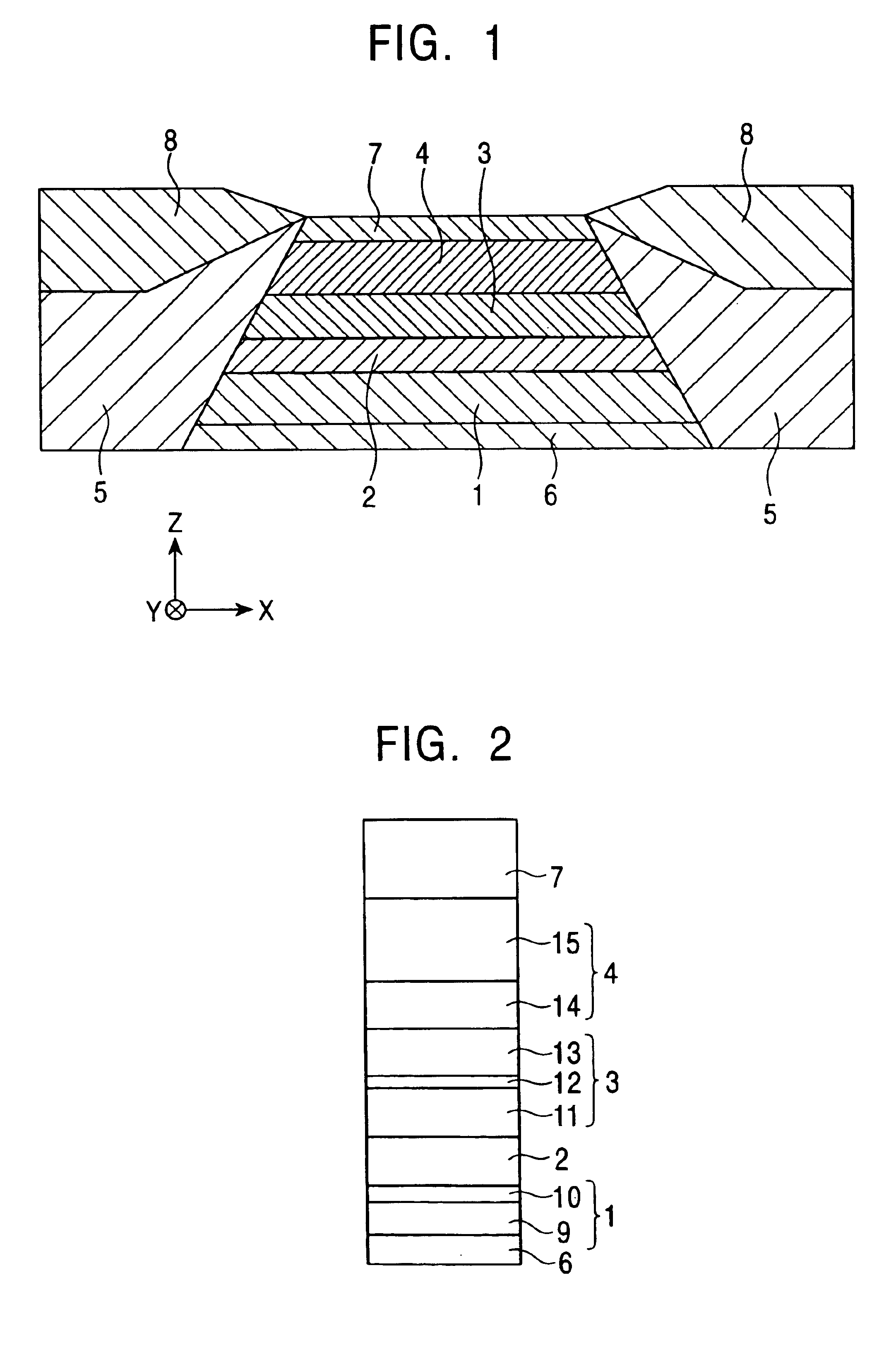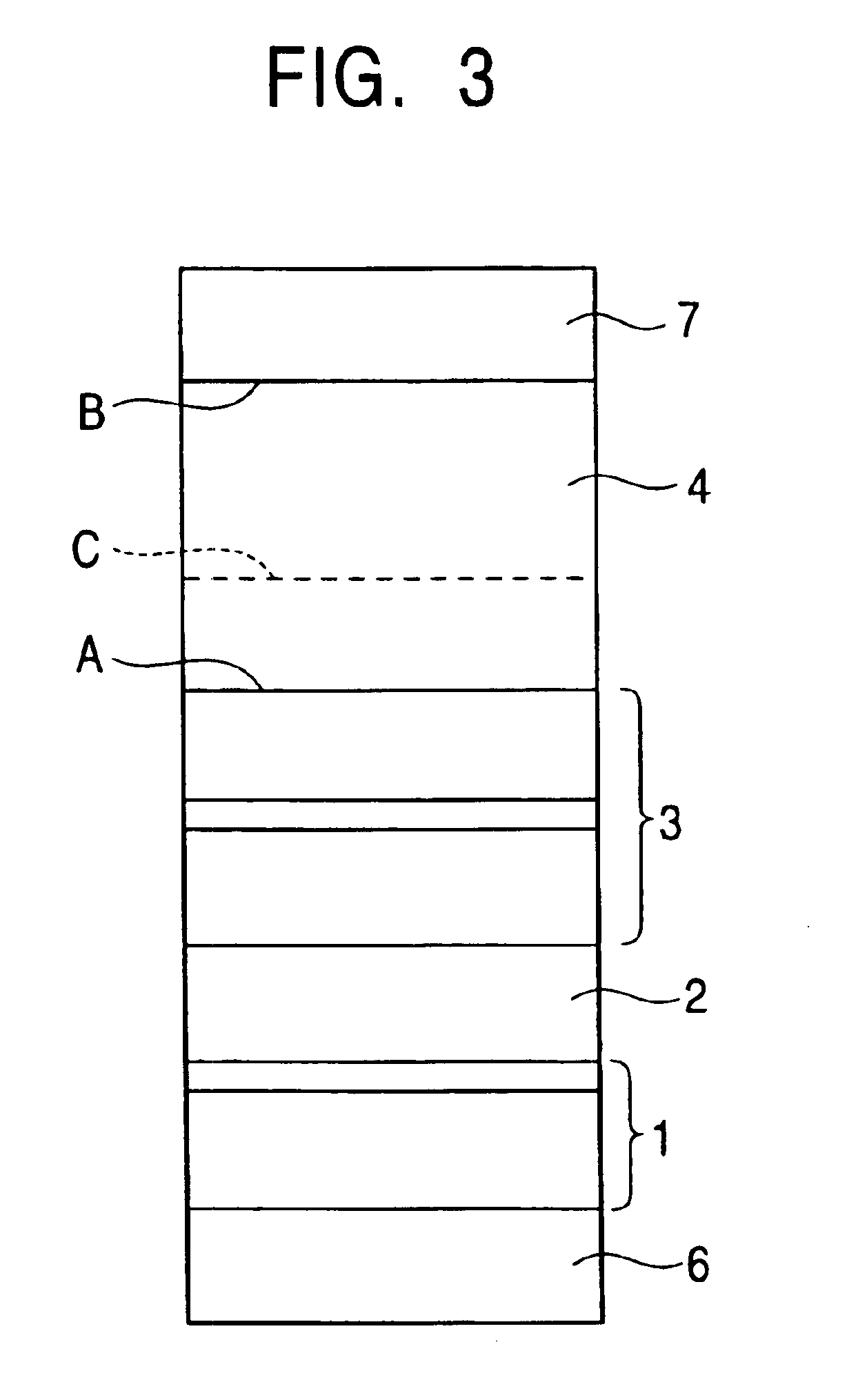Exchange coupling film and electoresistive sensor using the same
a technology of exchange coupling and electoresistive sensor, which is applied in the field of exchange coupling film, can solve the problems of insufficient transformation from disordered lattice to ordered lattice, unsatisfactory strength of etc., and achieve the effect of large exchange coupling magnetic field and large exchange coupling film
- Summary
- Abstract
- Description
- Claims
- Application Information
AI Technical Summary
Benefits of technology
Problems solved by technology
Method used
Image
Examples
first embodiment
FIG. 1 is a cross-sectional view of a single spin valve type magnetoresistive sensor in accordance with the present invention, as viewed from the same side as the ABS surface. In this Figure, only the central portion of the device which extends in the X direction is shown in cross-sectional view.
This single spin valve type magnetoresistive sensor is provided on, for example, a trailing side end of a floating slider of a hard disk device, and is intended to detect, for example, the recording magnetic fields on the hard disk. A recording medium such as the hard disk moves in a Z direction, while the direction of the magnetic field leaking from the hard disk is indicated by Y.
Shown at the bottom of FIG. 1 is an underlying layer 6 which is formed of a non-magnetic material including selected from the group consisting of Ta, Hf, Nb, Zr, Ti, Mo, and W and combinations thereof. On the underlying layer 6 are deposited a free magnetic layer 1, a non-magnetic intermediate layer 2, a pinned ma...
example 1
The laminate structure was composed of the following layers, sequentially formed from the bottom layer: Underlying layer 6: Ta (50) / free magnetic layer 1:[Ni80Fe20(45) / Co(5)] / non-magnetic intermediate layer 2: Cu(25) / pinned magnetic layer 3: [Co(20) / Ru(8) / Co(15)] / first antiferromagnetic layer 14: Pt58Mn42 (10) / second antiferromagnetic layer: Pt50Mn50(110) / protective layer 7: Ta(30)
example 2
The laminate structure was composed of the following layers, sequentially formed from the bottom layer: Underlying layer 6: Ta (50) / free magnetic layer 1:[Ni80Fe20(45) / Co(5)] / non-magnetic intermediate layer 2: Cu(25) / pinned magnetic layer 3: [Co(20) / Ru(8) / Co(15)] / first antiferromagnetic layer 14: Pt58Mn42 (10) / second antiferromagnetic layer: Pt50Mn50(X-10) / protective layer 7: Ta(30)
PUM
| Property | Measurement | Unit |
|---|---|---|
| volume ratio | aaaaa | aaaaa |
| temperature | aaaaa | aaaaa |
| temperatures | aaaaa | aaaaa |
Abstract
Description
Claims
Application Information
 Login to View More
Login to View More - R&D
- Intellectual Property
- Life Sciences
- Materials
- Tech Scout
- Unparalleled Data Quality
- Higher Quality Content
- 60% Fewer Hallucinations
Browse by: Latest US Patents, China's latest patents, Technical Efficacy Thesaurus, Application Domain, Technology Topic, Popular Technical Reports.
© 2025 PatSnap. All rights reserved.Legal|Privacy policy|Modern Slavery Act Transparency Statement|Sitemap|About US| Contact US: help@patsnap.com



